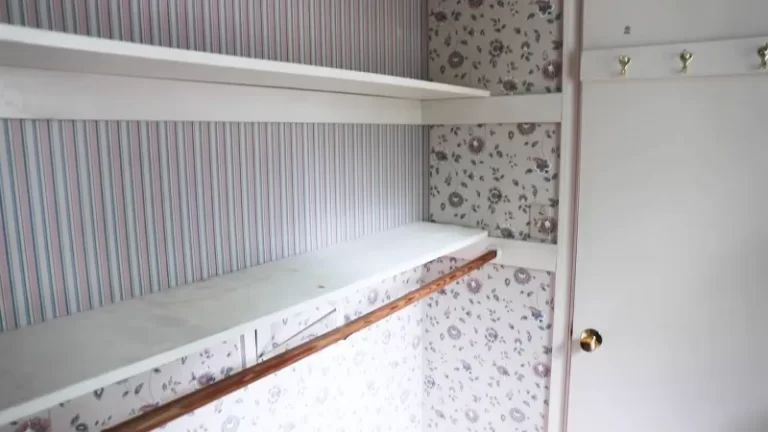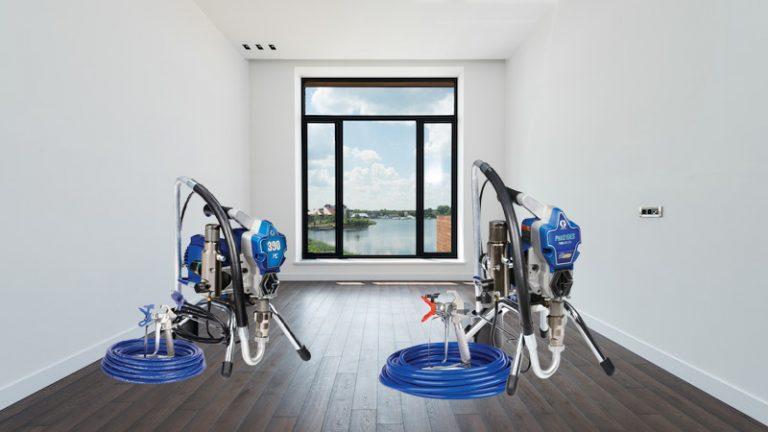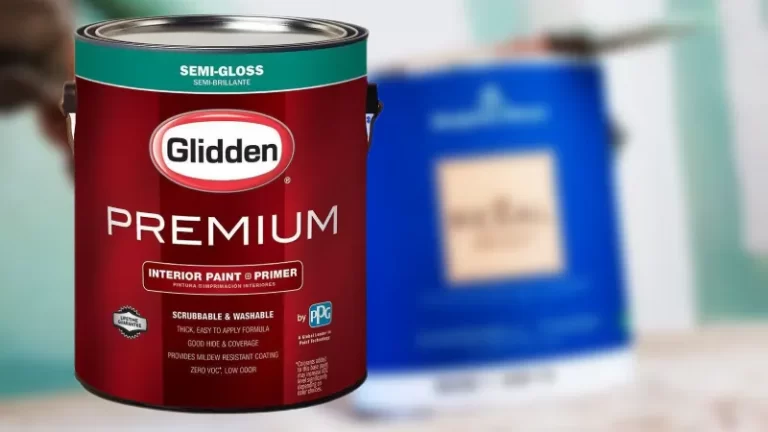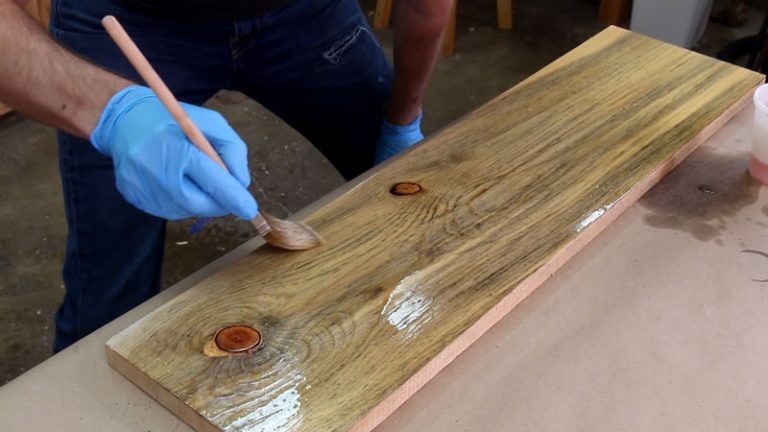Can You Use Flat Paint as a Primer?
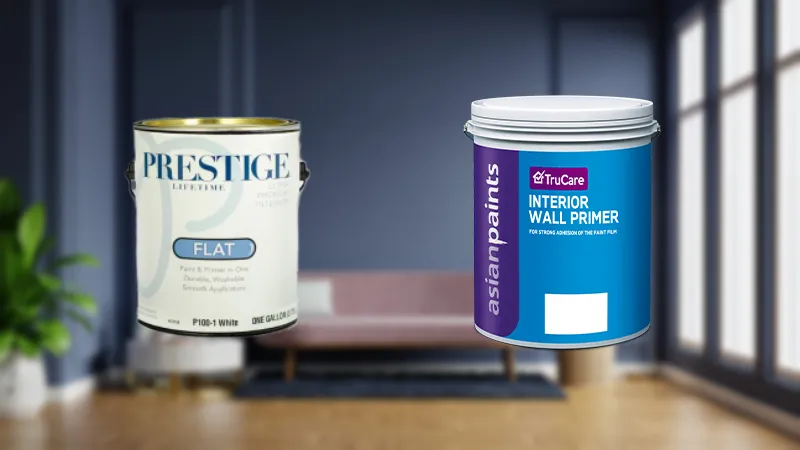
Welcome to our discussion on the topic of using flat paint as a primer. Before we delve into the details, it’s important to understand the definitions of both primer and flat paint.
Primer is a type of paint used as a base coat before applying the final layer of paint. It is applied to a surface to improve the adhesion and durability of the paint. It also provides a smooth, even base for the paint to adhere to. Primers are typically used on bare or porous surfaces, such as drywall, wood, or metal. They help the final layer of paint adhere better and last longer.
Flat paint, on the other hand, is a type of paint that has a matte finish. It is not shiny or reflective like gloss or semi-gloss paint. It is typically used to camouflage imperfections in a surface. Flat paint is often used on walls and ceilings. It hides any imperfections or blemishes. The matte finish helps to scatter light and minimize the appearance of flaws.
While both primer and flat paint serve important purposes in the painting process, it is generally recommended to use a primer before applying the final layer of paint. This is because primer helps to create a smooth, even surface for the paint to adhere to. It can also help to improve the overall durability and lifespan of the paint.
By using a primer, you can ensure that your final paint job looks its best and lasts for as long as possible.
You'll Learn About
What is Flat Paint Used for?
Flat paint is a type of paint characterized by its matte finish. A matte finish is a flat, non-reflective finish. It does not have a glossy or shiny appearance. Flat paint is often used on walls and ceilings in residential and commercial buildings. It creates a more modern and sophisticated look.
The matte finish can also help to hide imperfections in the surface. This includes blemishes or unevenness. It does not reflect light in the same way that glossier paints do.
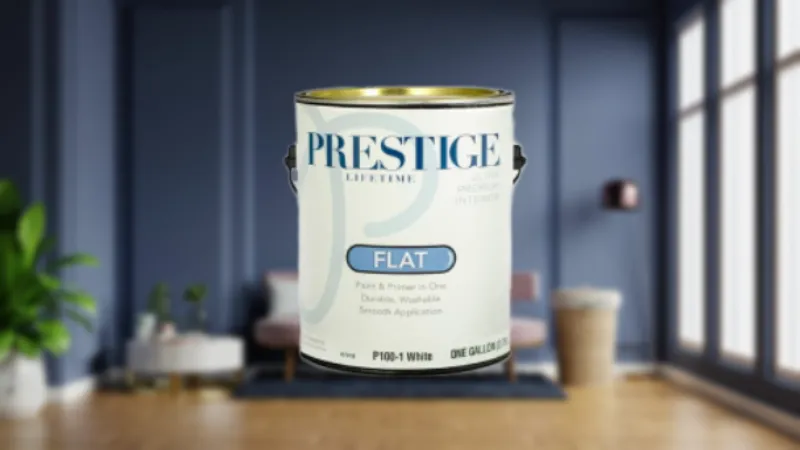
In addition to its matte finish, flat paint is also often used to camouflage imperfections in a surface. Because flat paint does not reflect light in the same way that glossier paints do, it can help to minimize the appearance of blemishes or flaws in the surface.
This makes it a popular choice for use on walls and ceilings. It can help to create a smooth, even appearance. Flat paint can also be used to cover up unevenness or imperfections in the surface. The matte finish helps to scatter light and minimize the appearance of differences in texture or level.
Can Flat Paint Be Used as a Primer?
While flat paint can potentially be used as a primer, it is generally not recommended as a substitute for traditional primer. This is because primer and flat paint have different properties. They are designed for different purposes.
Adhesive Properties of Primer Vs. Flat Paint
One of the main differences between primer and flat paint is the adhesive properties of each. Primer is specifically designed to have strong adhesive properties. These help it to bond to the surface and create a strong base for the paint to adhere to.
Flat paint, on the other hand, is not designed with the same level of adhesive strength. It may not provide a good base for the paint to adhere to. This can lead to issues with the paint peeling or chipping over time. It may not have a strong enough bond with the surface.
Potential Drawbacks of Using Flat Paint as a Primer
In addition to the weaker adhesive properties of flat paint, there are several other potential drawbacks to using it as a primer. One potential issue is that flat paint may not provide the same level of coverage as a traditional primer.
This can lead to the final layer of paint looking uneven or patchy. The primer may not be able to completely hide imperfections in the surface. Flat paint may also not provide the same level of protection as a traditional primer. It is not specifically designed to seal and protect the surface.
This can lead to issues with the paint fading or becoming discolored over time. It may not have the same level of protection from the elements. Finally, flat paint may not be as durable as a traditional primer. It is not specifically designed to withstand wear and tear. This can lead to issues with the paint chipping or peeling over time. It may not have the same level of durability as a traditional primer.
Other Considerations for Using Flat Paint as a Primer
When considering the use of flat paint as a primer, it is important to consider a number of other factors. These factors may impact its performance. They include the type of substrate being painted and the environmental conditions in which the painting will take place.
Type of Substrate
One important consideration when using flat paint as a primer is the type of substrate being painted. Different substrates, such as drywall, wood, or metal, may have different characteristics. These can impact the performance of the paint.
For example, drywall is a porous material. It may require a stronger adhesive primer to ensure that the paint adheres properly. Wood, on the other hand, may require a different type of primer. This is to seal and protect the surface from moisture and rot.
It is important to choose a primer that is specifically designed for the type of substrate being painted. This ensures that it provides the best possible performance.
Environmental Factors (Moisture, Mildew)
In addition to the type of substrate being painted, it is also important to consider the environmental conditions in which the painting will take place. In areas with high levels of moisture or humidity, it is especially important to use a primer that is resistant to moisture and mildew.
Flat paint may not provide the same level of protection against these elements as a traditional primer. It may be more prone to peeling or chipping as a result. It is important to choose a primer that is specifically designed for the environmental conditions in which the painting will take place. This ensures that it provides the best possible performance.
Alternatives to Using Flat Paint as a Primer
If you are considering using flat paint as a primer, it is important to consider the potential drawbacks and limitations of this approach. There are several alternatives to using flat paint as a primer. These may be more suitable for your specific needs and project.
Traditional Primers
One alternative to using flat paint as a primer is to use a traditional primer specifically designed for painting. Traditional primers are specifically designed to provide a smooth, even base for paint to adhere to. They can help to improve the overall performance of the paint.
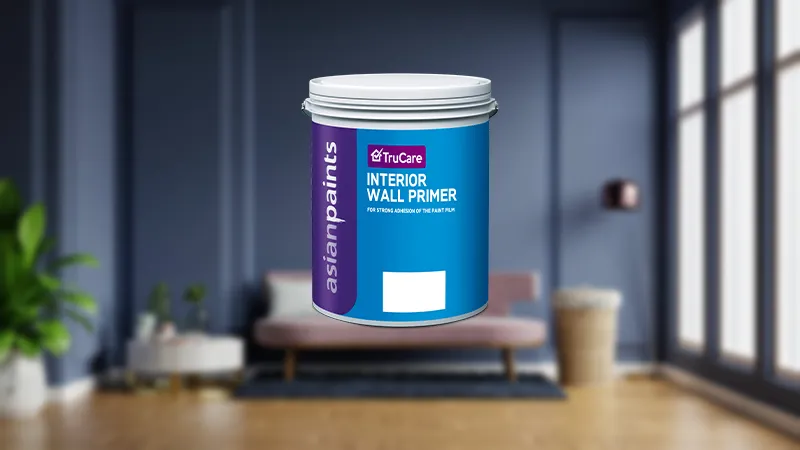
They are typically formulated with strong adhesive properties. They may be resistant to moisture and mildew. This makes them a good choice for use in damp or humid environments.
Traditional primers are available in a range of formulations. These include oil-based, water-based, and specialty primers for specific types of surfaces or conditions.
Specialty Primers
In addition to traditional primers, there are also a range of specialty primers available. These are specifically designed for specific types of surfaces or conditions.
These can include bathroom-specific primers that are resistant to moisture and mildew. They also include stain-blocking primers that are designed to seal and cover up stains or discolorations on the surface.
Specialty primers can provide additional protection and performance benefits over traditional primers. They may be a good choice for specific types of projects or surfaces.
Frequently Asked Questions
What is the Difference Between Primer and Flat Paint?
Primer is a type of paint used as a base coat before applying the final layer of paint. It is applied to a surface to improve the adhesion and durability of the paint. It also provides a smooth, even base for the paint to adhere to.
Flat paint, on the other hand, is a type of paint that has a matte finish. It is typically used to camouflage imperfections in a surface.
Can Flat Paint Be Used as a Primer?
While flat paint can potentially be used as a primer, it is generally not recommended as a substitute for traditional primer. This is because primer and flat paint have different properties. They are designed for different purposes.
Primer is specifically designed to have strong adhesive properties. It provides a smooth, even base for the paint to adhere to. Flat paint is designed for its matte finish. It is not typically recommended as a substitute for primer.
What Are the Potential Drawbacks of Using Flat Paint as a Primer?
There are several potential drawbacks to using flat paint as a primer. These include weaker adhesive properties, lower coverage and protection, and lower durability compared to traditional primer.
In addition, it is important to consider the type of substrate being painted. It is also important to consider the environmental conditions in which the painting will take place. These can impact the performance of the paint.
What Are Some Alternatives to Using Flat Paint as a Primer?
Some alternatives to using flat paint as a primer include using a traditional primer specifically designed for painting. Another alternative is using a specialty primer such as a bathroom-specific or stain-blocking primer.
These types of primers are formulated to provide the best possible performance. They can help to ensure that your final paint job looks its best and lasts for as long as possible.
Is It Always Necessary to Use a Primer Before Painting?
It is generally recommended to use a primer before painting. This is especially true on bare or porous surfaces such as drywall, wood, or metal. Primer helps to create a smooth, even surface for the paint to adhere to. It can also help to improve the overall durability and lifespan of the paint.
However, in some cases, it may be possible to skip the primer and go straight to painting. This depends on the condition of the surface and the type of paint being used. It is always a good idea to consult the manufacturer’s recommendations. Consider the specific needs of your project before deciding whether to use a primer.
More Tips
It is generally recommended to use a primer before painting. This is especially true on bare drywall. Primer is specifically designed to provide a smooth, even surface for paint to adhere to. It can help hide imperfections in the wall.
Flat paint, on the other hand, is designed for its matte finish. It is not typically recommended as a substitute for primer. Flat paint does not have the same adhesive properties as primer. It may not provide a good base for the paint to adhere to.
In a bathroom, it is especially important to use a primer that is resistant to moisture and mildew. You may want to consider using a bathroom-specific primer. This ensures that the paint will hold up well in the damp environment. You can take several clever steps for hiding primer.
Primers are designed to create a smooth, even surface for topcoats, while flat paint may result in uneven coverage and poor adhesion. Always use the right primer for your project.
If you’re working on painting projects, consider comparing Greco Pro210ES vs. Graco 390 for the best tools. Additionally, learning if you can paint PEX pipes can help you tackle unique challenges. For more tips, explore how to paint kitchen cabinets.
Final Words
While flat paint can potentially be used as a primer, it is generally not recommended as a substitute for traditional primer. This is because primer and flat paint have different properties. They are designed for different purposes.
Primer is specifically designed to have strong adhesive properties. It provides a smooth, even base for the paint to adhere to. Flat paint is designed for its matte finish. It is not typically recommended as a substitute for primer.
There are several potential drawbacks to using flat paint as a primer. These include weaker adhesive properties, lower coverage and protection, and lower durability compared to traditional primer.
In addition, it is important to consider the type of substrate being painted. It is also important to consider the environmental conditions in which the painting will take place. These can impact the performance of the paint.
Given the potential drawbacks and limitations of using flat paint as a primer, it is generally recommended to use a traditional primer specifically designed for painting.
Traditional primers are formulated to provide the best possible performance. They can help to ensure that your final paint job looks its best and lasts for as long as possible. Specialty primers may also be a good choice for specific types of surfaces or conditions.
By using a traditional primer, you can ensure that your paint adheres properly. It also provides the best possible performance.

